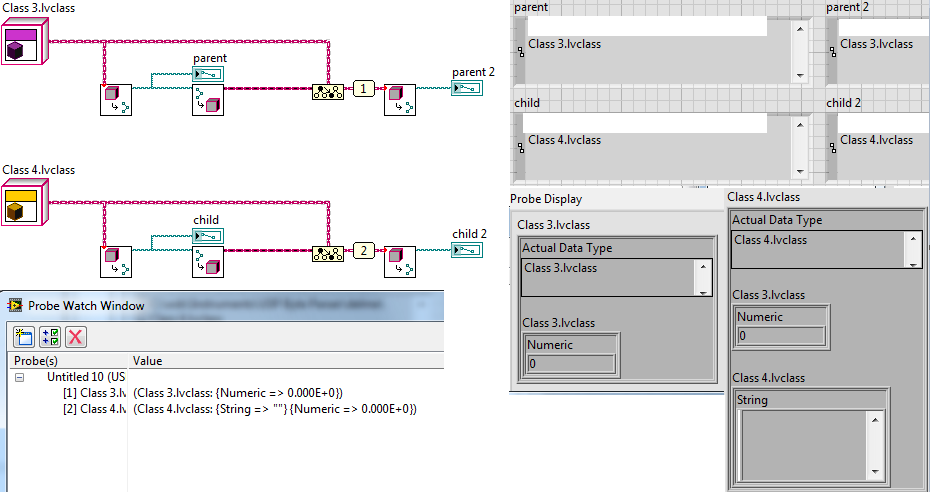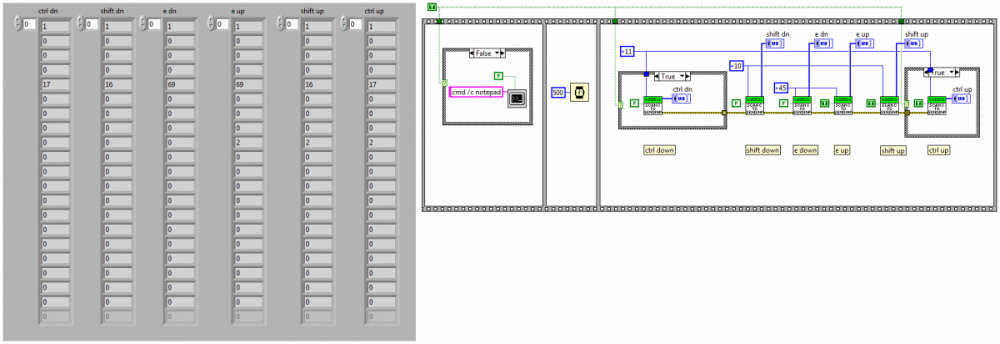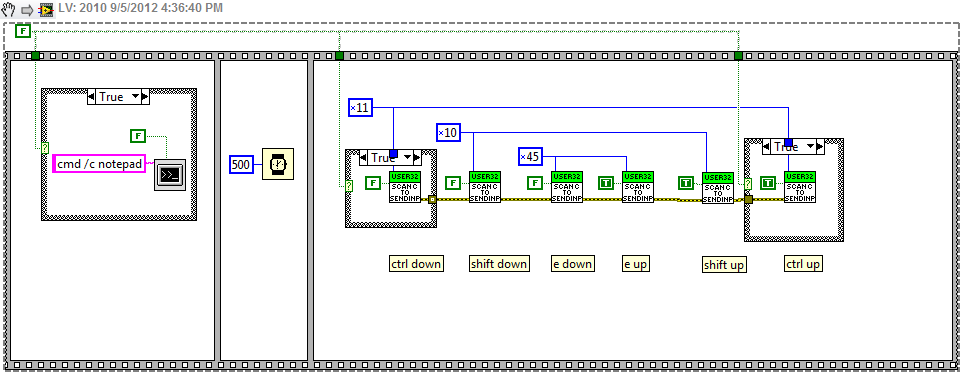-
Posts
335 -
Joined
-
Last visited
-
Days Won
13
Content Type
Profiles
Forums
Downloads
Gallery
Everything posted by todd
-

Do you aim to get users working quickest or do you aim to teach?
todd replied to Mr Mike's topic in LAVA Lounge
I worked with a smart guy who, when asked a question, would immediately give the answer. It motivated some people to work a lot more before asking him a question. "It was so easy for him! Maybe I can figure it out, this time." The people who came back to him with more questions tended to be either technicians or soon-to-switch-to-management-or-marketing types. (Hey, some of my best friends are managers and marketers.) I worked with another smart guy who, when asked a question, would answer the question that should have been asked - but without telling the asker the difference. It motivated some people to never ask him a question again. Those who came back to him with more questions tended to be curious perfectionists - always searching for practical knowledge. Forums have all types, so I vote with all those above who said, "give them both answers". -
Connectivitiy -> Input Device Control -> Initialize Mouse.vi and Acquire Input Data.vi. It shows up as Button 4. Perhaps a separate loop that generates a dynamic event.
-
Do you have the report generation toolkit? http://www.ni.com/analysis/excel.htm or are you using ActiveX directly? https://decibel.ni.com/content/docs/DOC-19913
-

Mixing and Matching Messaging Architectures
todd replied to GregFreeman's topic in Object-Oriented Programming
I'm playing with "zero-coupled" AF components that are used by message handlers. The difficult part so far is managing the top-level actor in the "root" diagram (main.vi). Specifically, creating events or queues in main and passing them both to the control actor and to the message handlers. -
Cross-post, here, with input from a company whi consults on SCORM: http://forums.ni.com/t5/LabVIEW/how-to-make-labview-scorm-complaint/m-p/2174830/highlight/true#M699336
-
Probes and "Get LV Class Path.vi" have useful information about whether you're down-casting properly:
-
The period snuck in: https://decibel.ni.com/content/docs/DOC-15560
-
You folks with your luxurious "written requirements" and "specifications"! All my reqs and specs are transmitted verbally and telepathically. Not a complaint - it's fun when the customer says, "Wow! I didn't think that could be done!"
-
Lapdog doesn't force you to really learn LVOOP.
- 74 replies
-
- qsm
- producer consumer
-
(and 1 more)
Tagged with:
-
http://lavag.org/topic/15609-lapdogmessaging-updated-to-version-21/page__hl__lapdog__fromsearch__1
- 74 replies
-
- qsm
- producer consumer
-
(and 1 more)
Tagged with:
-

CTRL+SHIFT+ Shortcuts sometimes not working in LabVIEW
todd replied to JackDunaway's topic in LabVIEW General
Sorry, change the constant outside the sequence to True, then swap the cases for the sysexec.vi. Running that shows me the VI in the project (since I have a project open). The snippet you posted sent key downs, but not key ups. Casting one of your clusters to a U8 array shows a different number of Bytes than the method in the zip file. You may need to adjust the representations, or pack the Bytes as in the zip file helpers. -

CTRL+SHIFT+ Shortcuts sometimes not working in LabVIEW
todd replied to JackDunaway's topic in LabVIEW General
I don't have 2012 on this box. However, I think sending an array of pInputs is too big. Try sending one keyup/down and one wVk at a time. I found the guts of this dll call somewhere on the NI forums. user32dll.zip Edit: Oh, I sped through and missed your array indexing. Perhaps try the U8 data format in the zip file. -

CTRL+SHIFT+ Shortcuts sometimes not working in LabVIEW
todd replied to JackDunaway's topic in LabVIEW General
Running that VI natively, here, it shows 0x18 - but it also performs the action (This VI in Project). I mentioned DirectX as the way that "Acquire Input Data.vi" probably works within the guest OS as a way for LV to see those inputs. The event structure probably ties in deeper than that. I imagine Parallels injects keys using a driver that is installed in the guest - or somehow uses "SendInput". Either way, it's a very tricky thing to manage. KeyOn and KeyOff need to be sent in such a way to avoid repeating keys, neglecting to send KeyOff can leave stuck keys, etc, etc. One of the Parallels threads mentions trying: Virtual Machine -> Configure -> Options -> Advanced -> Optimize modifier keys for games. Oh, I have an old Parallels license around somewhere at home - maybe I can play with it tonight. -

CTRL+SHIFT+ Shortcuts sometimes not working in LabVIEW
todd replied to JackDunaway's topic in LabVIEW General
Short answer: I don't know. That VI calls a LV function called getKeyboardState, which may be an abstraction of Microsoft's DirectInput API. If so, it returns a list of keys that are pressed. But that may be separate from the "Modifier Keys" bitfield in a keyboard report. Just poking in the dark, here, and drawing a target that someone who knows better will hopefully shoot down -

CTRL+SHIFT+ Shortcuts sometimes not working in LabVIEW
todd replied to JackDunaway's topic in LabVIEW General
Perhaps Parallels isn't sending all of the HID Keyboard information to the guest OS. One way to see may be to use System.Runtime.InteropServices.Marshal.ReadInt32(). I don't know it well enough to post code, though. -

Speech To text Conversion(Speech Recognition) Using LabVIEW
todd replied to Roopa's topic in LabVIEW General
Happy to help. What's the first problem? -
Motors manipulate devices. Instrumentation measures the devices. Different types of device data collection and different types of motor movements have different timespans and different requirements for synchronization. Currently, I use a left-to-right flow along with notifiers to synchronize things. I've been trying to figure out how to have the devices' drivers and the motors' drivers message each other. Is that vague enough?
-
Plus, it's a By-Val copy of an object with the ability to change its methods.
-
Are the results in each method repeatable?
-
Ha! I'm not sure if my contribution is just imaginary, or full-on negative.
-
Arg - I knew that applied to targets, but I didn't know it worked with projects.
-

Images in Multicolumn Listbox doesn't work as expected
todd replied to V_T_S's topic in LabVIEW General
But 0 is still empty. You'll have to skip zero and start counting at one. (Add an Increment after the iteration terminal in the For Loop). -
I used a separate loop to query "Bytes at Port" then read that many Bytes and put them one by one on a queue. (Termination character did not apply to that binary, streamed protocol.) With the Windows com port at 921600, groups of between 500 Bytes and 4k Bytes are available as close together as 300ms. With a VCP DLL at 921600, groups of between 100 Bytes and 3k Bytes are available as close together as 5ms. So my guess is that the latency settings in the VCP allow for a "long" timeout (255ms before returning: "you expected n Bytes, but they did not all arrive"), and a short timeout of 2ms - which works well for the way I was using it (always reading available Bytes).





